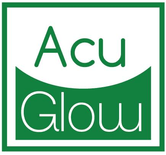
The short answer to this question is YES. When we perform dry needling (also called trigger point acupuncture) we are using an acupuncture needle to bring about a therapeutic effect. The use of the very specific technique of dry needling / trigger point acupuncture is done with the aim of resolving a trigger point in the muscle in order to resolve pain.
What is a trigger point?
A trigger point is a band of hyper-sensitive tissue in a muscle. Palpation, or pressing, on this spot will produce a painful sensation which can refer to another part of the body.
Dr. Janet Travell M.D. is known for her extensive work in finding painful areas in patients’ muscles which were referring pain to other parts of the body.
From the work of Travell and Simons, the clinical features of myofascial trigger points are as follows:
- Local tenderness over the trigger point
- Referred pain, tenderness, and autonomic phenomena
- Palpable taut band associated with the trigger points
- A local twitch response of a trigger point is usually present in a palpable taut band
- Perpetuation of trigger points
- A therapeutic effect when stretching a muscle with trigger points
- Weakness and fatiguability of muscles afflicted with trigger points
Why do some acupuncturists state that dry needling is not acupuncture?
Some acupuncturists have stated that they don’t consider dry needling to be acupuncture. This position comes about from the view that dry needling did not develop alongside, or as part of, traditional acupuncture techniques. They are fully entitled to hold this view and I understand where they are coming from. Many acupuncturists are more focused on internal conditions and will not be aware of how dry needling can be helpful if trigger points are present in a muscle; also, traditional acupuncture is itself very helpful for treating pain.
For acupuncturists who have found themselves treating a lot of people for pain and injury, and from learning other techniques such as motor point acupuncture, we have found that incorporating trigger point acupuncture into treatments, where needed, produces superior results in the toughest of cases.
The use of motor points and/or trigger points in a treatment has the added bonus of needing fewer treatments overall than if only traditional acupuncture were used.
What is a motor point?
A motor point is the neuro-muscular junction, or, where the motor nerve joins a muscle, typically found in the belly of the muscle. Needling of this point is done with the aim of correcting dysfunction in the muscle and getting it firing optimally again.
The bottom line.
Dry needling is just one small section of what can fall under the umbrella of acupuncture; there are many types of traditional acupuncture too, and acupuncture practitioners will choose the types they find works best for them, based on the extensive extra training they take following graduation and on the conditions they want to focus on treating in their clinics.
From my experience of using motor point and trigger point acupuncture, as taught to me by leading acupuncture teachers, I have found these techniques to be invaluable for treating tough pain and injury cases.
The bottom, bottom line.
Acupuncturists, as a profession, are ideally positioned to incorporate motor point and trigger point acupuncture into their practices(should they wish to do so) as they will have all spent 3+ years training, in developing their acupuncture needling skills, learning contraindications, with a strong emphasis on safety, and anatomy education too. Incorporating these techniques into their practice will also allow them to achieve the best possible results for pain patients.

